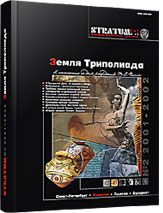Восточно-трипольская культура и контакты ее населения с энеолитическими племенами Поднестровья
The eastern Tripolye culture and contacts of its population with the Eneolithic tribes of the Dnestr region
Author(s): Elena V. TsvekSubject(s): History, Archaeology, Cultural history, Ancient World
Published by: Издательский дом Stratum, Университет «Высшая антропологическая школа»
Summary/Abstract: In the article the author characterizes the eastern area of the Cucuteni-Tripolye culture and considers the problem of connections between the eastern and western zones of the culture. The eastern Tripolye culture emerged in the first half of the IV mill. B.C. (uncal.) and existed for more than one millennium. Differences in the topography and layout of settlements, various types of constructions, permanent development of building methods, and especially changes in ceramic complex allows to discern four stages in the development of the eastern Tripolye culture. The first stage (BI) is related to the formation of the culture, the second and third (BI-BII and BII) are the period of its climax. At that time the culture occupies the largest territory from the Southern Bug to Dnieper. At the fourth stage the area of the culture dramatically decreased, and it survived until the latest phase of the Tripolye only on the small territory of the Dnieper region.During its existence the eastern Tripolye culture has maintained connections with the Cucuteni area but the character of these links was different. At earlier stages contacts with the population of the Dniester and Prut areas have been realized in the form of mutual exchange. However in the end of the stage BII an influx of the population from the Upper Dniester is registered. The first traces of this migration are evidenced in the Southern Bug basin (settlement of Klishchev) and then they appear in the Bug-Dnieper interfluves in the material of the final phase of the Vesely Kut settlement as well as in Miropolie, Garbuzin, etc. In the end of the middle Tripolye culture in the eastern region a complicated process took place, which is resulted in final assimilation of the large part of the local population by newcomers from the Dniester region.
Journal: Stratum plus. Археология и культурная антропология
- Issue Year: 2002
- Issue No: 2
- Page Range: 170-178
- Page Count: 9
- Language: Russian
- Content File-PDF

